Giò chả Ước Lễ (Uoc Le Pork Roll)
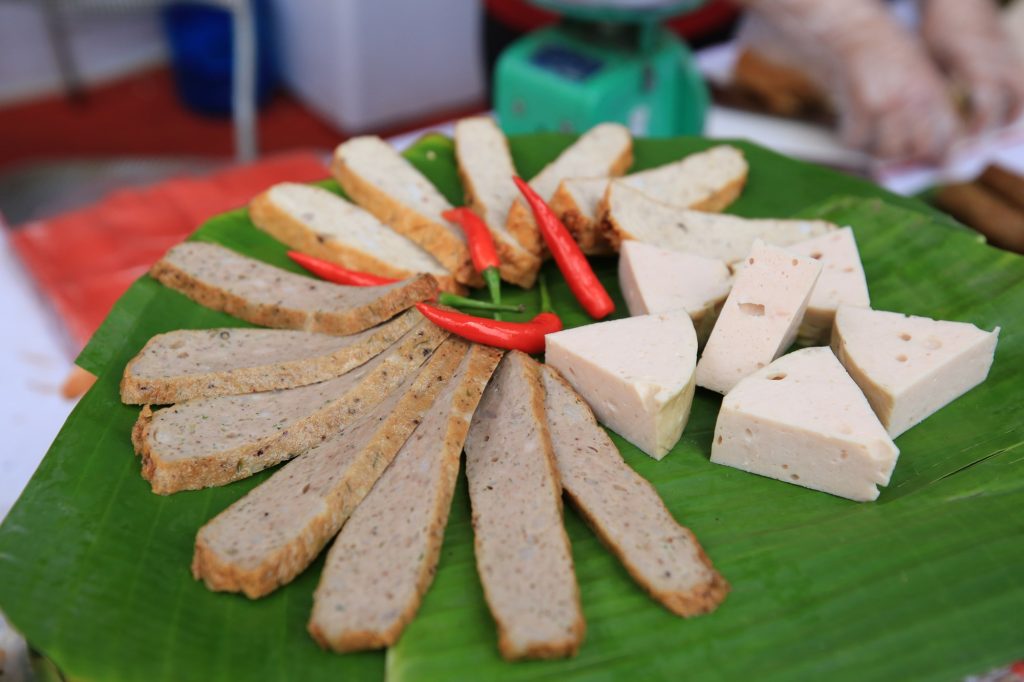
Nguyên liệu
Main Protein Base
-
1kg pork leg meat (nạc mông – trimmed, cold ground finely for best texture)
Binders & Texture
-
30g tapioca starch (bột năng)
-
5g baking powder (bột nở – helps create bouncy texture)
Seasonings
-
40ml fish sauce
-
10g sugar
-
A small pinch of salt
Wrapping
-
Banana leaves (lá chuối – softened for flexibility)
-
String or nylon tie (dây lạc hoặc dây nilon – to tie firmly)
Thành phần dinh dưỡng
For: Omnivores
Calories per serving: ~ 250–280 kcal (per 100g slice)
Key Nutrients
1. Lean Protein (20–24g)
- Source: Pork leg meat (nạc mông)
- Benefits: Builds and repairs muscles, supports enzyme and hormone production, and keeps you full.
2. Healthy Fats (12–15g)
- Source: Pork (natural intramuscular fat)
- Benefits: Provides energy, enhances flavor and texture, supports absorption of fat-soluble vitamins.
3. Complex Carbs (2–3g)
- Source: Tapioca starch (bột năng)
- Benefits: Helps bind the mixture and gives the signature springy texture.
4. Sodium & Flavor Enhancers
- Source: Fish sauce + salt
- Benefits: Enhances taste, helps preserve texture (when used moderately).
5. Essential Minerals
- Iron (pork): Supports red blood cell production
- Zinc (pork): Strengthens immune system and aids wound healing
- Phosphorus (meat): Supports healthy bones and energy metabolism
1. Prepare the Meat
- Wash the pork thoroughly, then cut it into small pieces. Season the meat with spices and place it in the freezer for about 2 hours.
- Use a blender or food processor with a meat-grinding function to grind the meat finely. Then return the meat to the freezer for another 2 hours.
- Take the meat out and grind it again, this time adding a small amount of water. At this stage, the mixture (called giò sống) will start to become smooth and fragrant.
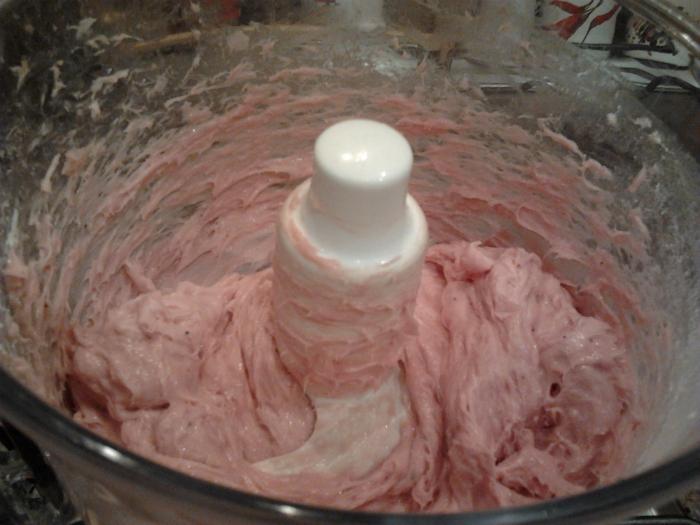
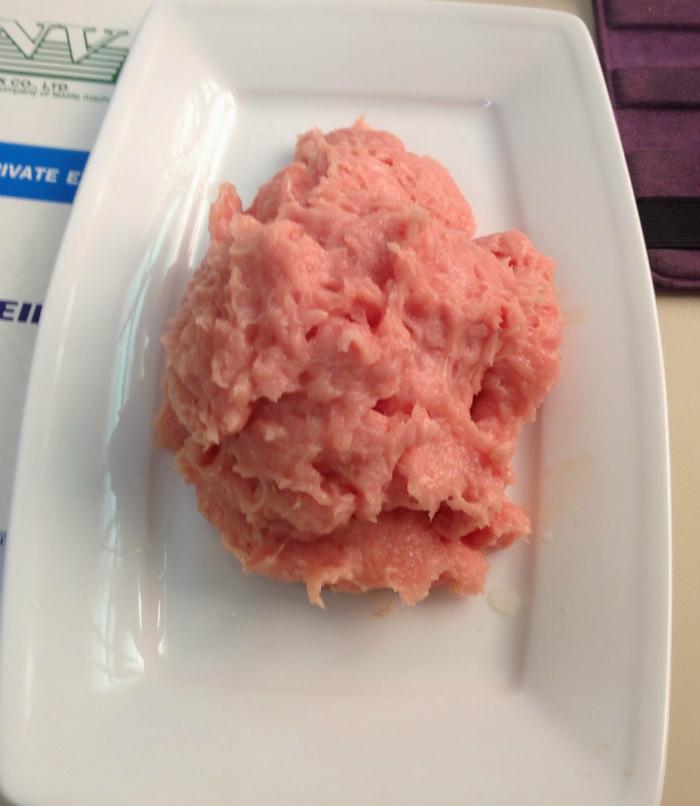
2. Wrap and Steam the Pork Roll
- Wash banana leaves and lay them flat. Place strings underneath the leaves. Spread the pork mixture evenly on top of the leaves.
- Roll the leaves tightly into a cylinder, folding the ends inward. Tie the roll securely with the string, but don’t tie it too tightly, as the roll will expand slightly during cooking.
- Place the wrapped roll into a rice cooker and boil for 40–50 minutes. If using a pressure cooker, steam for 15–20 minutes. Once done, remove the roll, let it drain and cool.
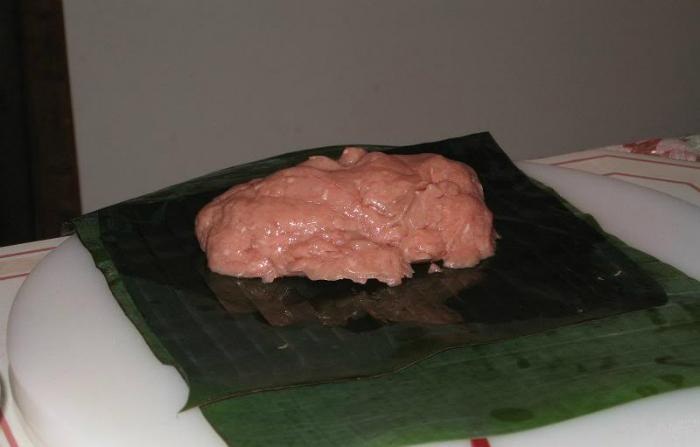
3. Finished Product
Freshly made pork roll is fragrant and firm with a pleasant bouncy texture. It’s perfect for Tết (Lunar New Year), parties, or simply to enjoy with steamed rice or bánh mì!
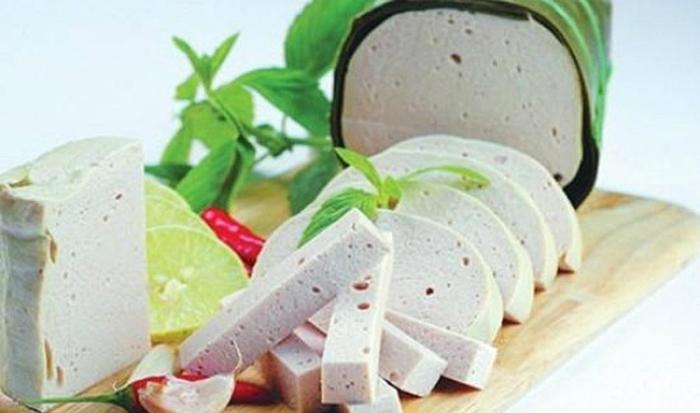
Vietnamese Pork Roll (Giò Chả): A Symbol of Celebration and Craftsmanship
with a spotlight on Ước Lễ Village – The Homeland of Tradition
In every Vietnamese feast—be it a New Year’s celebration, a family gathering, or a wedding—you are likely to find a humble, tightly wrapped cylinder of steamed pork: giò chả, also known as Vietnamese pork roll. Though modest in appearance, this dish holds deep cultural significance. It represents not only culinary skill but also respect, unity, and prosperity.
Dating back hundreds of years, giò chả is believed to have originated as a royal offering, combining finely ground pork with fish sauce and traditionally pounded by hand in a mortar until it reaches a springy, elastic texture. Wrapped in layers of banana leaves and steamed to perfection, the final product reveals a smooth, firm roll that slices cleanly and tastes delicately savory. Over time, giò chả evolved into a beloved everyday staple, yet it still retains its ceremonial roots—serving as an essential dish during Tết (Lunar New Year), ancestor worship, and communal meals across the country.

(Pork Roll – Vietnam traditional dish in Tet holiday)
But when it comes to quality and heritage, Ước Lễ Village, located in Thanh Oai District on the outskirts of Hanoi, is unmatched.
For over 500 years, this village has been famous for its time-honored giò chả, handcrafted using secret techniques passed down through generations. The story goes that a mandarin chef in the imperial court, originally from Ước Lễ, returned to his hometown after retirement and shared the art of royal sausage-making with his neighbors. From then on, giò chả Ước Lễ was born—not just as a food, but as a symbol of pride and craft.
What makes Ước Lễ’s version so special?
It lies in precision and integrity. The pork must be freshly slaughtered, with just the right balance of lean and fat. It must be pounded, not ground, to preserve the meat’s natural elasticity. The seasoning is minimal—only high-quality fish sauce, pepper, and a pinch of salt—letting the quality of the meat shine. The banana leaves used for wrapping must be cleaned thoroughly and tied in a signature cylindrical shape. The result? A beautifully bouncy, aromatic roll that is rich yet clean-tasting, with a natural sweetness and no additives.
Today, even as machines and shortcuts abound, the artisans of Ước Lễ still value handcraft over haste. Many families in the village have made giò chả for generations, and their products are trusted nationwide, especially during holidays when consumers seek not only taste—but trust.
To eat giò chả Ước Lễ is to savor a legacy. It is a quiet reminder of how food can carry history, identity, and the spirit of an entire village—all wrapped tightly in green leaves, and offered with care.
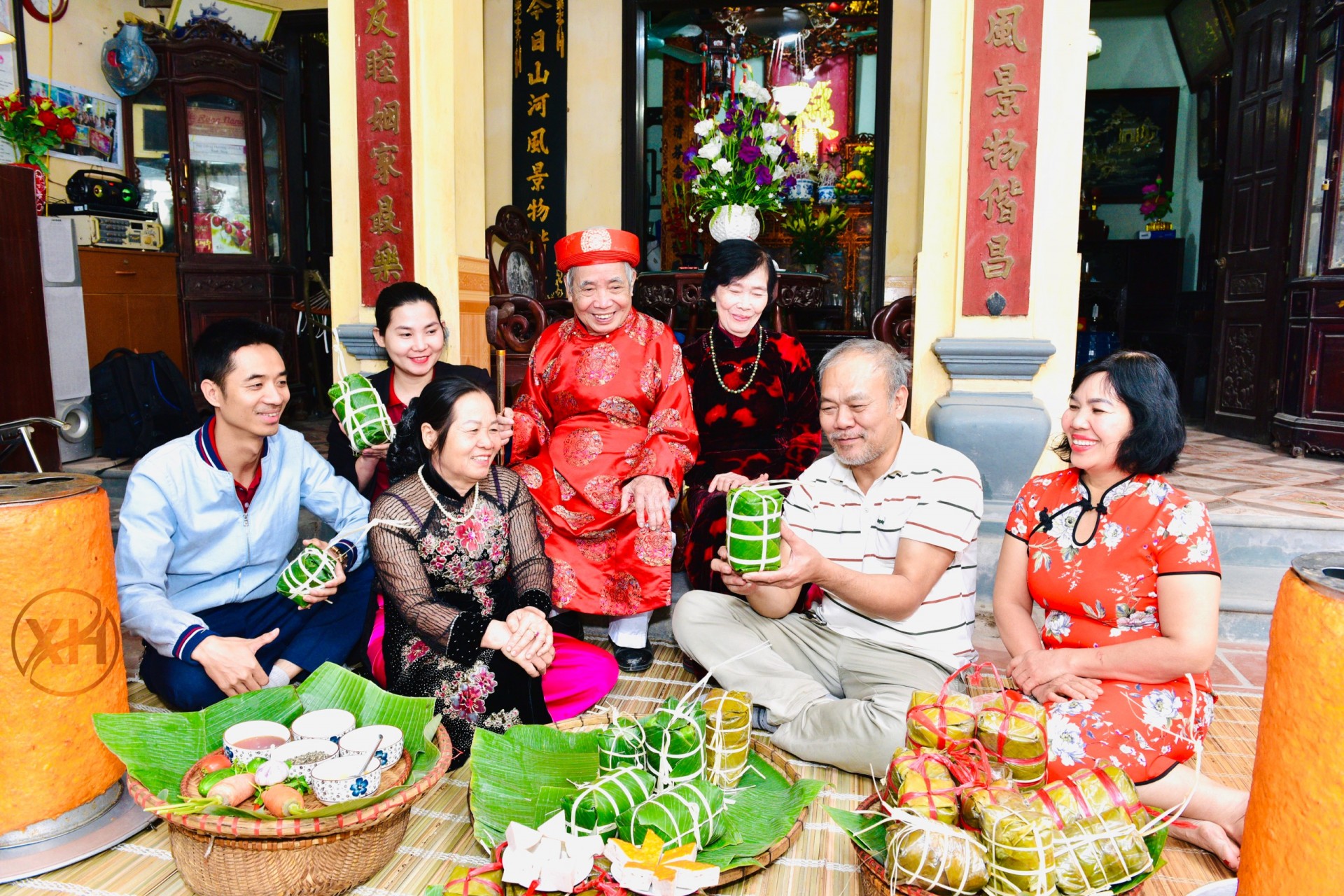
(Uoc Le Pork Roll – A Taste of Centuries-old Tradition)